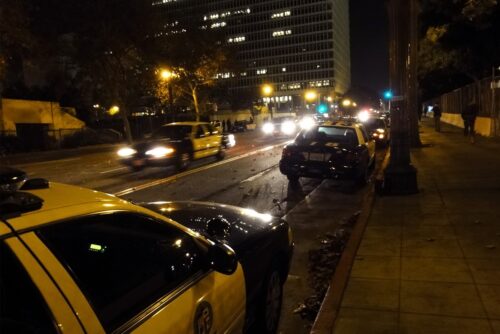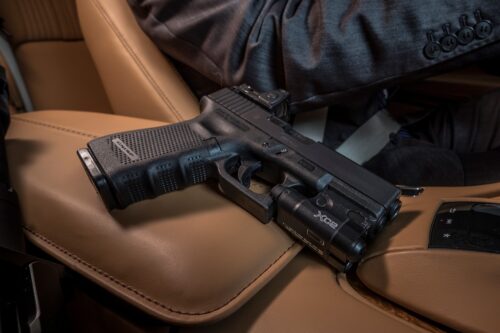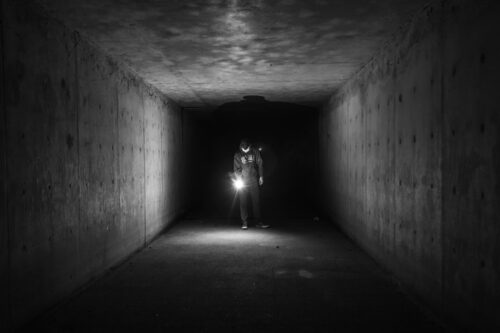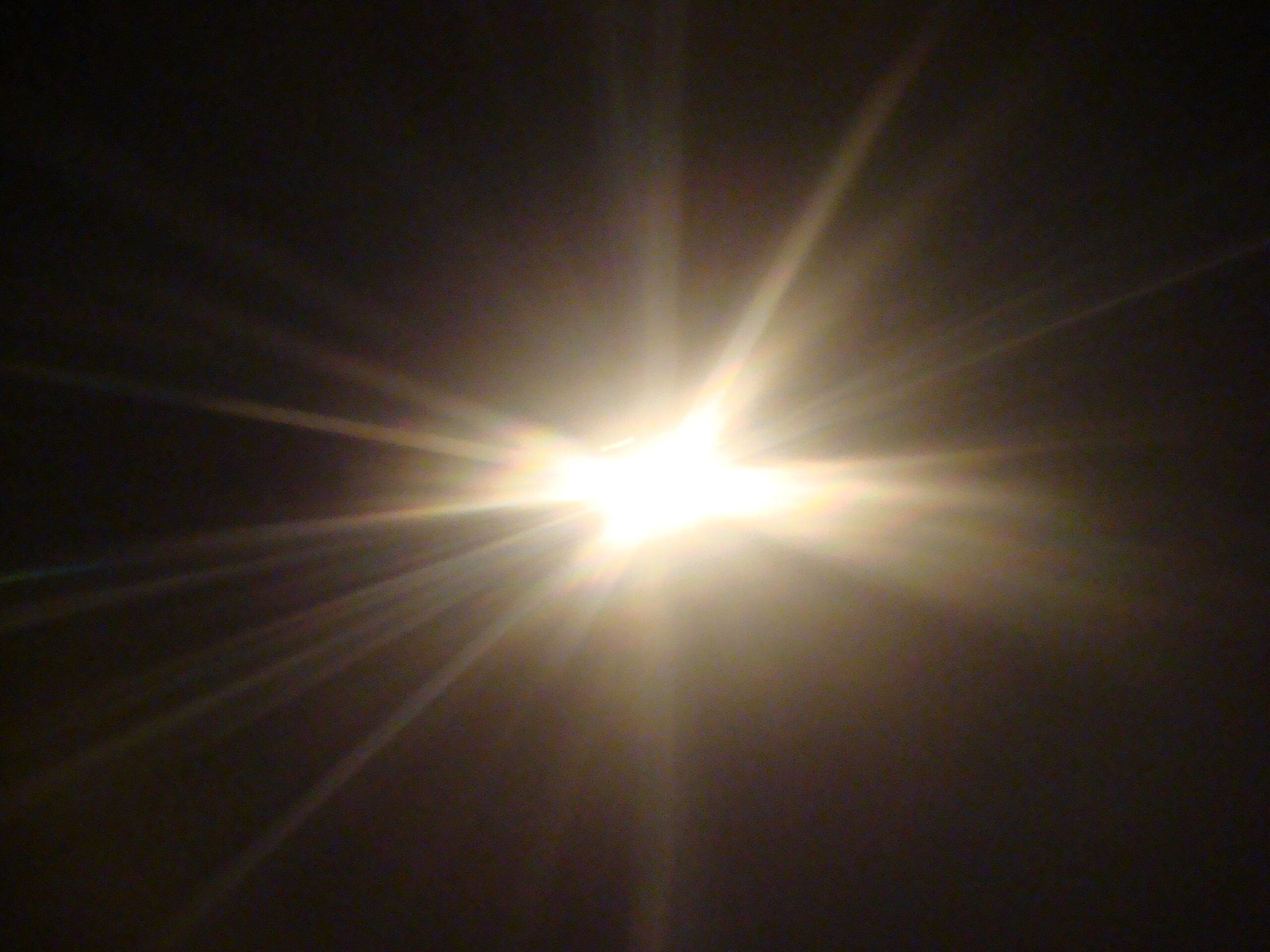A flashlight is an essential component of everyday carry (EDC). If you ever have to use your firearm in self-defense, there is a very strong likelihood that it will be in low or diminished light. And you cannot afford to make any mistakes. Most of us don’t go around on an EDC basis with NODs. A white light is our only option.
The time frame in which the you will perceive danger to when deadly force is deemed necessary will typically be under a fraction of a second. You need adequate light to locate, identify, evaluate and, if necessary, engage threats.

A research study conducted by the Los Angeles Police Department found that officers have difficulty in distinguishing between lethal and non-lethal objects in levels of light less than that produced by 0.5 foot candles — routine working conditions at night.
And these are highly trained officers. The average citizen will likely do much worse. And even during the day, there are many situations in which you will face conditions of reduced or inconsistent lighting.
To make matters worse, your visual acuity will be further reduced by the fact that you and the bad guy will frequently be in motion prior to and during a shooting And the effects of stress and fear also adversely affect your visual acuity. Hormones are secreted by the body during periods of high stress or acute fear that dramatically decrease visual functioning.
And even if you aren’t carrying a gun or plan on using flashlight for self defense, it’s still one of the most useful and versatile everyday carry tools that you can have with you. A flashlight should be in your hand anytime you are navigating in potential diminished lighting scenarios where any threat may be present or hiding.
Need for White Light
The best way to handle danger is to avoid it in the first place. When this is impossible, the best way to handle danger is to stay ahead of the reaction curve.
You don’t want an assailant to have the jump on you. And you can’t fight what you don’t see. In a lethal force encounter you can’t afford to make a mistake. In conditions of low-light, a powerful white light makes this possible.
Tritium night sights, a red dot optic or a laser aimer will greatly aid shot placement, but you first need to see the threat. Not only will a white light be essential for illumination, it will also provide you with a significant tactical advantage when employed in a tactically sound manner.
The application of high-intensity white light can impair the vision of anyone looking directly into the beam and temporarily disorient that individual, providing you with a critical edge. A powerful light can provide a non-lethal force option and reduce the level of force that’s necessary.

Handheld Flashlights vs Weapon-Lights
Handheld flashlights and weapon-lights each have their individual advantages, as well as limitations. Each has its place. Many individuals choose to carry both so they have options.
Manipulating both a flashlight and a weapon can be difficult if not impossible in fast-moving, high-stress situations. It also ties up both hands, one hand to hold and operate the light and the other hand to control and operate the weapon. And should you drop the flashlight, you’re suddenly without a light. The best option with a flashlight is to to use a lanyard or a retention ring to help mitigate these issues.
These issues don’t exist with a weapon-light. A weapon-light will provide you with white light in critical reduced light situations without adversely affecting your ability to shoot, while allowing the you to maintain a free hand for other tasks. And since the light is mounted on the weapon, the light is always aligned with the weapon.
Although technological advances have led to ultra-compact weapon-lights suitable for concealed carry applications, having a weapon-light doesn’t eliminate the need to carry a flashlight. A flashlight is still essential for general illumination tasks and as a backup.
A weapon-light is part of the weapon system and needs to be treated as such. It’s an adjunct to a flashlight and not a replacement for it. If you’re not justified in drawing and pointing your gun, you’re not justified in pointing a weapon-light. A flashlight allows you to safely assess the situation without pointing your gun at a non-threat.
A variety of techniques have been developed for holding a gun and a flashlight The basic concept behind all of the flashlight-assisted shooting techniques is to index the hot-spot of the light and the sights of the weapon on the target. There are pros and cons to each of the techniques.
You need to figure out what works best for you. Don’t limit yourself. Practice different techniques both with dry firing and at the range. Also practice reloads and clearing malfunctions with the flashlight. A gunfight is dynamic and fluid.

White Light Tactics
White light can be your friend or your foe. It all depends on how you employ it. Do it right and you have a much greater chance of winning any fight. Do it wrong and you may have a very bad day, indeed.
Searching with a white light can be a two-edged sword. Is situations where there’s a possible threat the first thing to consider is if searching is the best approach. Do you have another option that is better or safer? Searching with a white light can become a liability if armed assailants are present.
If searching is deemed necessary, there are several widely used techniques that you can employ to increase your safety. The appropriate techniques and tactics will, of course, vary depending on the situation. Always use commonsense.
Sometimes the best approach is when searching a building is to first turn on the building lights while making effective use of cover and concealment. Should you choose to go this route, advise others with you at the location of your intentions before doing so.
Although this will rarely apply to the armed citizen, prior to throwing any switches, consider the possibility that engaging any electrical system may pose a risk of triggering a booby trap. Although this won’t be an issue under most circumstances, in some circumstances it may be.
Another consideration is that light switches are often a good source of fingerprints and DNA. People touch light switches without even being aware that they are doing so. You don’t want to contaminate any crime scene unless absolutely necessary.
A bad guy has obvious tactical advantages when you don’t know the his location. Until threats are located, it’s best to keep a flashlight away from your body as much as possible. Your flashlight can be the only aiming reference point that an assailant has and he will naturally assume that you are behind it.
When a threat may be present, white light should be used intermittently, with varying placement of the beam, duration of on time, and angle of the beam, as the tactical situation allows. The goal is to locate and identify threats while creating an illusion as to your actual location. A constant on mode rapidly drains batteries, degrades night vision, and makes you visible to potential threats.

The intermittent use of light can provide you with a tactical advantage. One technique is for you to use momentary flashes of light to gain instant pictures of your immediate surroundings, then move away from each flash.
After you have moved through the area that has been captured by a flash, use another flash to get a picture of a subsequent area. This technique lessens the likelihood of an assailant pinpointing your location while you’re searching with the white light.
Another technique is the use of indirect illumination, i.e, bouncing light off of a ceiling or a wall. The use of indirect illumination helps conceal your location, since the intensity of the light from your flashlight won’t increase as you approach an illuminated area. Indirect illumination can also often be used to locate a someone concealed behind an object by the shadows that are cast by light bounced around the object.
If you’re working with a partner, your partner can use indirect illumination from his or her flashlight to illuminate danger areas in front of the you. From a position of cover, your partner can also use direct illumination from his flashlight for the same purpose and to provide you with partial concealment, provided you’re behind the light beam.
When employing a weapon-mounted light, indirect lighting can be utilized to identify an individual in a low-light environment without having to point the light and the attached firearm directly at that individual. The light can be pointed in a safe direction on a wall, floor or ceiling, and reflected or “bounced” back to identify that individual.
When using either direct or indirect illumination, it’s always extremely important to avoid silhouetting or illuminating yourself or a partner with reflected light. You also need to be aware of any shadows that may be cast that will give away your approach.
When lighting up a potential assailant, dominate his face. Aim the light directly into his eyes. This will temporarily impair the person’s vision and have a disorienting effect that will give you time to attack or flee. It can create what has been referred to as a photonic barrier providing concealment..
Strobing (rapidly flashing your light), either manually or with a light equipped with a strobe mode, is another technique that may be employed. It has been the subject of controversy as to the degree of its tactical effectiveness, although there is no disagreement that it can be used to get a subject’s attention.

As a tactical tool, some see strobing as little more than a gimmick. Others see it as a valuable tool when properly employed. Strobing is typically employed when closing gaps, to disorientate and confuse threats, channel the route of a subject, or to gain attention. As with all lighting technique, the effectiveness of strobing varies on the amount of environmental light. It works best in conditions of near total darkness.
Although it has its proponents, from my perspective the disadvantages of using a strobe often outweigh its potential benefits. The fundamental mechanism of a strobe is to provoke a phenomenon known as flicker vertigo. This can induce disorientation, vertigo, and nausea and in rare cases seizures. This effect can impact not only your intended target but also you and anyone else present.
Whenever there is the possibility of multiple assailants, turn the light on immediately before shooting to illuminate the target. Turn the light off immediately after shooting and then move away the target in a lateral direction to prevent being located as a result of the white light beam or the muzzle flash.
The technique differs somewhat when there is only one assailant. If you’re certain there is only a single assailant, the white light should be kept on and target acquisition maintained after the assailant is down and incapacitated, until such time that you’re certain the threat has been terminated or back-up arrives.
Never forget that that proper use of cover and concealment is just as important in low-light situations. Bad guys don’t worry about clearly identifying their targets before opening fire.
Summing Up
As is so oft-stated, control the light, win the fight. While many factors play into outcomes, you want to do everything that you can to put the odds in your favor. Dominate and control whatever you can. The application of the proper white light tactics are critical in this regard in any low-light scenario. And in conclusion, low-light shooting tactics are a separate skillset that needs to be practiced.
Low-light training is essential. Despite the fact that most shootings take place in reduced light, most training takes place in daylight and little or no training is given in low-light tactics.
Sources
SureFire, LLC
www.surefire.com
*The views and opinions expressed on this website are solely those of the original authors and contributors. These views and opinions do not necessarily represent those of Spotter Up Magazine, the administrative staff, and/or any/all contributors to this site.

